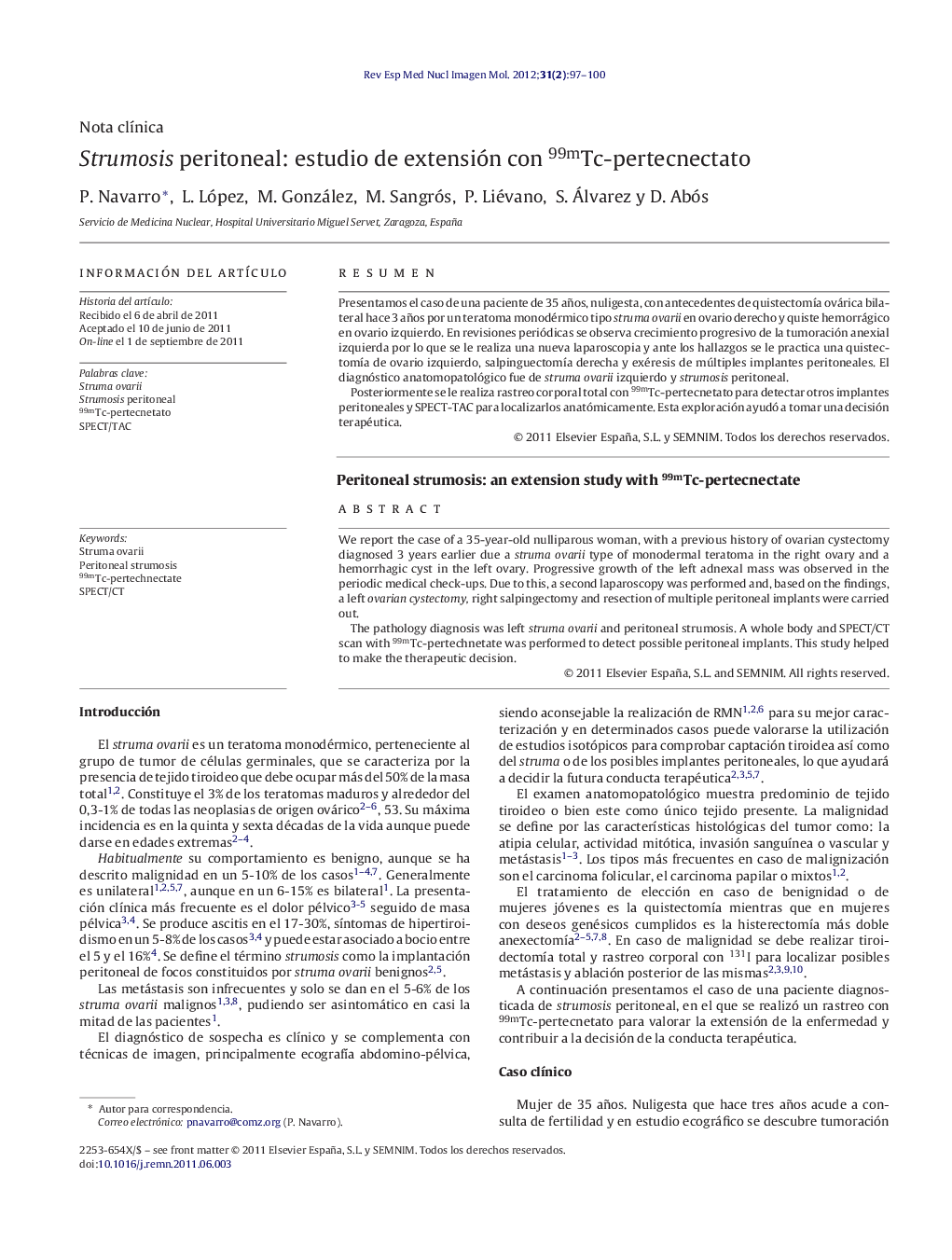| Article ID | Journal | Published Year | Pages | File Type |
|---|---|---|---|---|
| 4250005 | Revista Española de Medicina Nuclear e Imagen Molecular | 2012 | 4 Pages |
ResumenPresentamos el caso de una paciente de 35 años, nuligesta, con antecedentes de quistectomía ovárica bilateral hace 3 años por un teratoma monodérmico tipo struma ovarii en ovario derecho y quiste hemorrágico en ovario izquierdo. En revisiones periódicas se observa crecimiento progresivo de la tumoración anexial izquierda por lo que se le realiza una nueva laparoscopia y ante los hallazgos se le practica una quistectomía de ovario izquierdo, salpinguectomía derecha y exéresis de múltiples implantes peritoneales. El diagnóstico anatomopatológico fue de struma ovarii izquierdo y strumosis peritoneal.Posteriormente se le realiza rastreo corporal total con 99mTc-pertecnetato para detectar otros implantes peritoneales y SPECT-TAC para localizarlos anatómicamente. Esta exploración ayudó a tomar una decisión terapéutica.
We report the case of a 35-year-old nulliparous woman, with a previous history of ovarian cystectomy diagnosed 3 years earlier due a struma ovarii type of monodermal teratoma in the right ovary and a hemorrhagic cyst in the left ovary. Progressive growth of the left adnexal mass was observed in the periodic medical check-ups. Due to this, a second laparoscopy was performed and, based on the findings, a left ovarian cystectomy, right salpingectomy and resection of multiple peritoneal implants were carried out.The pathology diagnosis was left struma ovarii and peritoneal strumosis. A whole body and SPECT/CT scan with 99mTc-pertechnetate was performed to detect possible peritoneal implants. This study helped to make the therapeutic decision.
